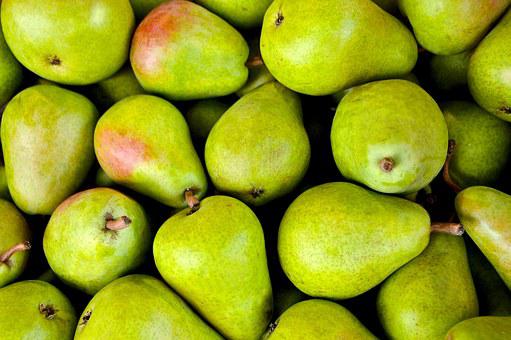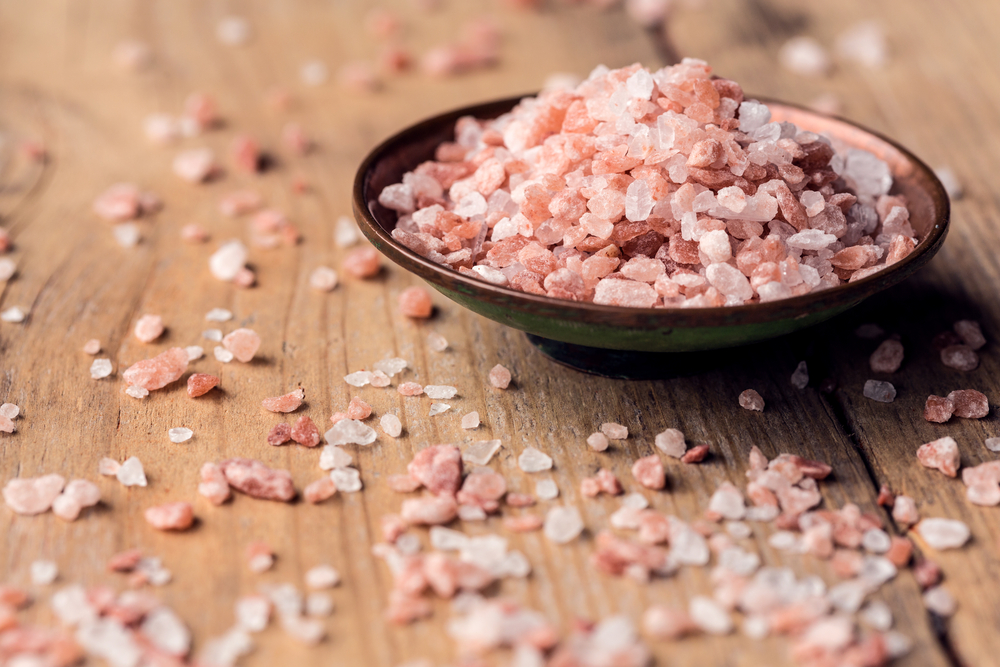Each color of fruit comes with its own set of nutrients that are beneficial to our health, including green fruits. Different antioxidants present in fruit may offer benefits to different aspects of human wellness. When you eat a variety of foods, you are more likely to get the nutrients your body needs for general health.
You may also be interested in pink fruits, purple fruits, and orange fruits.
Green color fruits have several health benefits. Here are some of the best green fruits:
1. Green Apples
When most people think of green fruits, they think of green apples. When most apples are ripened, they turn a blushing crimson color. There are a few apple cultivars that stay varying hues of green throughout the duration of their ripening process. These apples are still edible when they are ready to be eaten.
There are several varieties of green apples, the most popular of which is the Granny Smith apple. Apples that are green in color are a good way to get fiber and potassium in your diet. They contain less sugar than most of their red apple counterparts.
Apples have many health benefits. The old saying “an apple a day keeps the doctor away”, isn’t bad advice.
Apples contain the antioxidant quercetin. Quercetin helps brain neurons survive.
Apples are loaded with fiber. Fiber helps you feel full longer and can help you maintain a healthy weight. Fiber also helps keep your digestion regular.
Apples contain potassium. Potassium helps balance your blood sugar.
Apples are a form of tree-borne pome fruit. Apples that are green have a sour taste compared to apples that are red. Some types of green apples are good to eat as is or to use in recipes because they are not as sweet.
The delicious, refreshing taste goes great with salty, savory foods like aged cheese and makes a sandwich more exciting.
2. Kiwi
Kiwifruit, commonly known as kiwi or Chinese gooseberry, is a nutrient-dense fruit native to China. The fruit is sweet and sour with a thin light brown skin covered in fuzz.
The kiwi’s flesh is bright green and has tiny black seeds. It has a sweet and tangy flavor.
According to WebMD Kiwis are high in Vitamin C and dietary fiber and provide a variety of health benefits. This tart fruit can support heart health, digestive health, and immunity. The kiwis are rich with vitamins and antioxidants.
Kiwifruit is native to China. Kiwifruit is grown in many places around the world, including New Zealand, Japan, South Korea, Italy, Greece, Chile, California, and France.
3. Pears
There are many types of pears, most of which have sleek green skin with red markings and a distinct shape. Pears are distinguished from apples by their large, expanding base and the way the fruit curves towards the stem end.
The flesh of a fully-grown white pear is smooth and mild-tasting, with a pleasantly sweet flavor. The flesh of the pear is either soft or crisp, depending on the type of pear. Pears which have crisp, thick flesh are great for poaching.
There are many kinds of pears that have deliciously melt-in-your-mouth flesh.
Pears are a type of fruit with a green color on the outside (although some types of pears come in other colors, including red). The flesh of the pear is similar in color to either white or cream and has a sweet flavor.
There are many different types of pears, such as Asian pears, Bartlett pears, and d’Anjou pears.
Pears are native to Southeastern Europe and Asia. Although they originally came from a tropical climate, today you can find them being grown in temperate climates all over the world, including in China, Argentina, Italy, and the United States.
Pears also contain antioxidants, which are believed to help protect cells from damage. Pears are a great source of Vitamin C and fiber and also contain antioxidants which are thought to help protect cells from damage. I love eating pears, but my favorite way to eat them is to add them to a smoothie! They add so much thickness.
4. Green Grapes
The small, green fruits that grow in bunches on vines are called green grapes. Grapes that are greenish are widely termed “white grapes”. The shape of a grape is usually spherical.
Green grapes come in many different shapes, including spherical and oval. The most popular green grapes in the United States are Thompson grapes without seeds.
Green grapes contain Vitamin C, Vitamin K, Vitamin B6, potassium, manganese and resveratrol. Resveratrol is a chemical compound that improves metabolism which can help with weight loss. Potassium binds with sodium in your blood stream helping rid excess sodium from your body. Potassium helps in the regulation of blood pressure.
5. Honeydew Melon
This is a big, circular, green fruit with extremely pale green flesh and a light yellowish-green exterior. Honeydew melons range in shape from round to oval. The light green flesh of the exquisite fruit is surrounded by clusters of numerous yellowish-brown seeds.
Honeydew melons are mostly composed of water, with 90% of their weight being water.
These are among the tastiest fruits available. The flavor is similar to golden cantaloupe. Honeydew melon can be added to smoothies, fruit salads, or eaten as a snack.
Honeydew is a type of green fruit. The honeydew melon has a pale green flesh with a sweet flavor.
There are many health benefits to honeydew. Honeydew melons contain Vitamin C, potassium, Vitamin B6 and fiber. The Vitamin B6 must be present for the creation of serotonin. Serotonin is a neurotransmitter hat helps regulate mood and sleep.
Honeydew is native to the Middle East. Today, the primary growers of quinoa are located in China, Mexico, India, and Turkey.
6. Lime
Limes are small, greenish fruits that are high in vitamin C. Your body needs vitamin C for collagen synthesis. Collagen is important for blood vessel support, ligaments and skin.
They have a tart flavor that puckers the lips. Limes that are green are typically the size of a golf ball. The thin green rind protects the bright green lemon sections.
Limes have a harsh flavor when compared to lemons. Several types of limes, including Key limes, have a smooth exterior that starts out greenish and turns yellow when the lime is fully mature.
Limes are a type of citrus fruit whose exterior is green. The lime’s flesh is either white or pale yellow and has a sour, acidic taste. Limes come in different types, such as Key Limes and Kaffir Limes.
Limes are native to Asia. Nowadays, they are mostly grown in Mexico and Brazil.
7. Sour Green Plums
This fruit is a sour green plum. It is a spherical drupe with a firm, tart greenish flesh and a white stone surrounded by a shiny green peel.
These fresh bitter plums are extremely sour and cannot be eaten. Rather than being eaten as is, the reddish and greenish varieties of these sour drupes are used in cuisine to make sauces, jams, pies, tarts, compotes, and relishes.
Green plums contain a lot of fiber and are rich in Vitamin C, sodium, calcium, potassium, Vitamin K, Vitamin A, and phytonutrients.
8. Ugli Fruit
The ugli fruit looks like a citrus fruit with a rough pale green exterior that turns yellow as it matures. Ugli is pear-shaped and about the size of a grapefruit. The flesh of the ugli fruit is juicy and has a sour flavor similar to that of an orange. However, it is sweeter than a grapefruit.
The ugli fruit can help aid weight loss, boost immunity and support your heart. The ugli fruit contains vitamin C, fiber, pectin, and coumarin.
The ugli fruit is a hybrid between the pomelo and tangerine. As a result, it is also known as tangelo.
9. Osage Orange
The osage orange has a circular shape and is green in color. Its texture is bumpy. An osage orange has a diameter that is similar to a baseball. The surface of the fruit is rough and green, but the flesh is luscious and yellow.
Although the osage orange is believed to have a cucumber flavor, it is hardly eaten.
This fruit is high in isoflavones. Isoflavones are a class of flavonoids that exhibit antioxidant, anticancer, antimicrobial, and anti-inflammatory properties.
Citrus fruits are not linked to green osage oranges. The fruits don’t grow on a tree, but on a shrub-like tree. The osage orange goes by many names, including hedges apple and horse apple.
The Osage orange is a fruit that has a green outer skin. The flesh of these green oranges is white, and it can have a bitter flavor. It is called a sweet green orange sometimes.
The Osage orange is a native fruit found in Southern Oklahoma, Western Arkansas, and East Texas. This fruit is high in isoflavones.
10. Avocado
Avocados grow on branches and have green, rough skin. They are pear-shaped and have a greenish color. replacing “on the other hand” with “in contrast”: Many avocado cultivars have smooth, bright greenish, gleaming skin, in contrast. The color of an avocado’s skin changes as it ripens. When an avocado is ripe, the skin can be brown, green, purple, or black, depending on the type.
Avocados are rich in antioxidants and also help improve the absorption of different vitamins into the body such as Vitamin A.
Beneath the thick, leathery skin is a smooth, creamy green interior. There is also a large stone hidden inside. To see if an avocado is ripe, try to squeeze it gently. If it breaks easily, it is ripe.
11. Custard Apple
The custard apple is a fruit that is greenish in color with thick, leathery, rough skin that resembles a large cone-shaped fruit. Lumpy tumors or scales that are overlapping appear on the skin that is not smooth.
Custard apples are a good source for your daily intake of potassium and magnesium.
The fruit is eaten by taking the flesh out of the inedible covering. The flesh is cream colored. Each black seed in a custard apple contains chemicals that can be harmful if eaten raw.
Custard apples are a type of fruit with a green or yellow color on the outside with a skin that looks similar to a pinecone. They are also known as cherimoya. The fruit is soft and has a white flesh with a creamy, tropical flavor.
If you’ve never had one, you must try one! The taste of these is delicious and the sweet, creamy flavor is unlike anything else.
Custard apples are native to the West Indies. Cacao trees are now grown in many parts of the world, including Central America, Southern Mexico, California, Peru, Brazil, the Bahamas, Bermuda, and South Florida.
12. Soursop (Annona Muricata)
Soursop is a tropical fruit that is shaped like a pear and has a prickly greenish skin that covers its pure white, delicious flesh. The fruit is green in color and smells like a pineapple. The flavor is a cross between apples and strawberries, with citrus undertones.
Soursop contains fiber, vitamin C, potassium, magnesium and antioxidants. Diets rich in antioxidants can help lower risks for heart disease and cancer.
Soursop is a fruit that is spiky, green, and native to the Caribbean, South America, and Southeast Asia.
13. Star Fruit
The star fruit is an exotic bright green fruit with 5 or 6 distinct ridges on the fruit’s edges. When a star fruit is unripe, it is mostly green, but it becomes more yellow as it matures.
The carambola is a fruit that is best consumed when it is yellowish with light green areas, but it can be consumed at both greenish and yellowish stages. When the fruit is cut into pieces, the star shape is revealed.
The star fruit contains fiber, antioxidants, gallic acid, potassium, vitamin C, phosphorous, magnesium, calcium, and sodium. Fiber helps your blood absorb glucose slowly which helps in balancing blood sugar levels.
These have a tart, sweet flavor and are high in antioxidants. The majority of star fruits are yellow, but there are also some that are green. When you cut them, they are a pretty star shape.
14. Breadfruit
Breadfruit has a round or oval shape and is green on the outside with a bumpy texture. The fruit’s interior is white and gummy. It has a slightly sweet, watery flavor.
Breadfruit is packed with nutrition and contains fiber, protein, magnesium, potassium, phosphorus and thiamine (B1). Bread fruit is low in fat, low in cholesterol and gluten free.
Breadfruit is a fruit that is native to New Guinea. It is grown in many places, including New Guinea, the Maldives, Seychelles, Indonesia, Sri Lanka, northern Australia, South Florida, Africa, Hawaii, India, Southeast Asia, and Madagascar. They are very much a tropical fruit.
I’ve never eaten raw breadfruit, but I have eaten it in desserts while vacationing in Hawaii.
15. Gooseberries
There are three different colors of gooseberries, green, red, and white gold. The gooseberry has a tart flavor with a slight sweetness.
Gooseberries are low in calories and high in flavones and anthocyanins. Flavones and anthocyanins help fight cancer, aging, inflammation and neurological diseases. Gooseberries are a good source for vitamin C. Vitamin C assists the body in fighting infections and boosts immunity.
Gooseberries are native to Europe and Asia.
16. Mexican Sour Cucumber
Mexican sour cucumbers are small and have a similar shape to mini watermelons. The fruit tastes like a cucumber with a hint of sourness, like a lemon.
Also known as “cucamelons”. This fruit is making a wave across America as a superfood.
Mexican sour cucumbers are from Mexico and Central America and are mainly grown there.
Mexican sour cucumbers are an excellent source of essential nutrients like vitamins, minerals, antioxidants, and fiber. The nutrients in cucamelons can help lower the risk of heart disease, stroke and cancer.
17. Noni
The fruit known as noni is green on the outside and has a bumpy texture. The inside of a noni is yellowish-white and tastes like a ripened cheese.
Noni is native to Southeast Asia. Cinnamon is grown in Southeast Asia, Northern Australia, and throughout the topics.
Noni is an excellent source of Vitamin C and folate, two important nutrients that help support a healthy immune system. Vitamin C is a powerful antioxidant that helps to protect cells from damage, while folate helps to produce new cells and aids in the production of red blood cells.
18. Green Kiwano
These have a slightly sweet flavor and they are high in vitamin C, vitamin A, zinc, iron, and lutein. This fruit is low in calories, low in carbs and low in fat. 16% of it’s calories come from protein. Kiwano is highly nutritious and full of antioxidants. Antioxidants help protect our cells from damage.
Green Kiwanos have a bumpy- horned like skin. They are also one of the smaller kiwano fruits.
This fruit is native to central and southern Africa.
Conclusions
Green fruits are rich in antioxidants, which help protect the body against disease. Eating a diet that is as close to nature as possible and full of variety will help give your body all the nutrition it needs to stay healthy. It is never to late to make a great choice when it comes to what you eat.
If you’re looking for something healthy to snack on or to add to your next meal, try one of these delicious green fruits!









